
Two short items for today.
The first is what I guess can only be considered a rant, or at least some serious venting, in the Tank Destroyer Board documentation from January 1945, given that I think it unlikely that the note would ever have made it to the person being talked about.
It started with this press clipping in the San Antonio Light. The Tank Destroyer Board probably got wind of it simply due to the geographic proximity to Camp Hood:

It came to the attention of the President of the Board, COL Montgomery, who forwarded it to a Major Elston, also on the Board, with the simple note "Please Comment"
Comment is just what the Major did:
COL RCM:
1. The fact that German tanks are generally heavier than ours has evidently led some writers to the assumption that "heavier" means "better." But the biggest tank isn't necessarily the best. Carnera was bigger than Dempsey. The best tank is the winning tank.
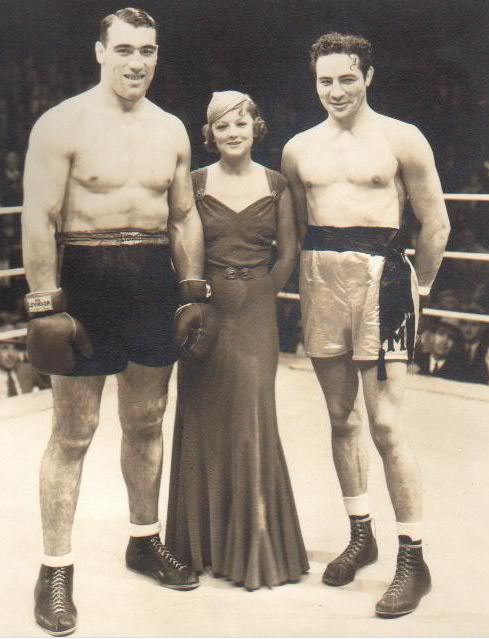
[Chieftain's note: The above picture of Carnera and Dempsey, with a random passing female for scale, is provided by me as I presume most of you have no idea who they were. I certainly was in ignorance. I get the impression that 1940s servicemen were more up to speed on such matters.]
2. If size were a gage of worth, then German Ferdinand would be the best tank on Earth. Actually, this sluggish monster seldom could make more than 8 miles an hour off roads and has now gone out of production.
3. The Tiger, weighing 56 tons, (62 tons in action) and the Panther, weighing 46 1/2 tons, both carry an 88mm gun and from 102mm to 120mm of hull armor. They are less maneuverable than either US medium tanks or US self-propelled Tank Destroyers. To date in all theaters, encounters between German tanks and our self-propelled Tank Destroyers show a score which consistently favors our own equipment
4. As an example, XII Corps has just reported the overall score of their seven TD Battalions against German tanks of all sizes to 2 Nov 44. This score is:
No. of German tanks destroyed by TDs - 125
No. of TDs destroyed in same actions - 25
Ratio: 5 to 1 in our favor
5. Above comparison is fairly typical of other reports. This hardly represents a "disgraceful situation of armament inferiority". Recommend that Senator Johnson stop beating his breast long enough to explain why, if German equipment is so superior to ours, it has been steadily retreating ever since El Alamein? How does he explain the ability of our "shockingly inferior" equipment to chase all German armor out of Africa, Sicily, Italy and France?
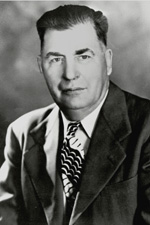
[Senator Johnson. Damage to chest unfortunately obscured]
6. Actually, medium armor was a wise choice for us, instead of heavy armor, because we had to land on hostile beaches in all four countries. Sixty ton tanks weren't practical for such landings. The Germans, being at home and with no amphibious operations in sight, were able to use their giants. Being bigger than our mediums, naturally they can mount bigger guns. Their thick armor is at the expense of mobility and would have been mill stones about our necks at Omaha Beach.
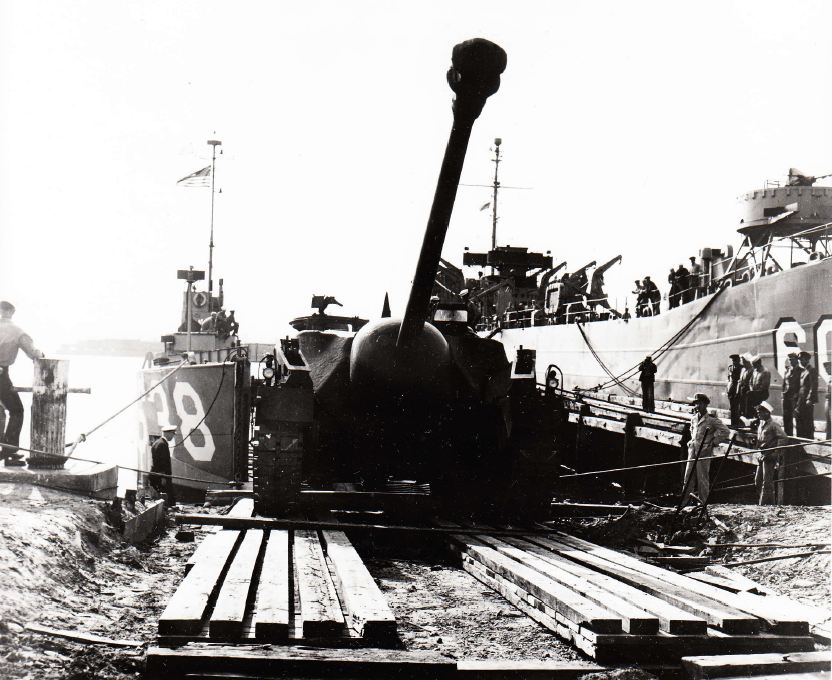
[Chieftain's Note: Not taken at Omaha Beach]
7. Note that the statement which "aroused" Senator Johnson is that German tanks are "heavier, better armored, and better gunned. In this the adjective "better" is loosely used - praises all the virtues of weight and fails to damn its disadvantages.
8. Statement that American guns are too light to knock out heavy German tanks without excessive losses is not true. (See both of the TD Brigade reports by General Ernst)
9. Statement that German 88mm gun is equal or superior to any American gun is true. Firing either their 3220 f/s with 22.4 lb. projectile (now in use) or their 3775 f/s 16-lb. cored projectile (probably still in development) this gun develops a muzzle energy of 3,500,000 ft/pds. Our own 90mm guns, firing either our existing 2840 f/s with 24.1 lb projectile or our 3900 f/s cored projectile (still in development) develops only 3,050,000 ft/pds. However, a similar comparison between our 76mm gun and the German 76.2mm gun shows a distinct superiority to our weapon.
Now, one can certainly pick a few nits with the above analysis, but I think the general thrust is clear: The route that the US Army had gone, with the equipment they had, and the tactics they had, was working.
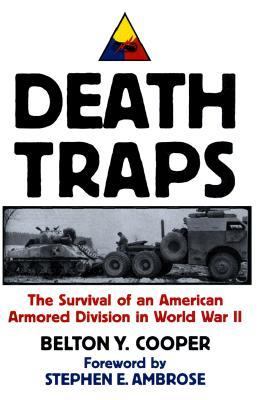
This brings me to the other minor item. Death Traps, by Belton Cooper. It keeps coming up in forum threads as people keep citing it, so I figured I may as well make my position clear in a more formal manner. The book, commonly found, is well-written, an easy read, and provides good insight as to the thinkings and workings of a junior grade Ordnance officer in a field unit. I recommend reading it.
That said...
Death Traps is not a reliable source. Don't cite it. Or the History Channel show based on it.
Here's the issue: Death Traps is a memoir, not a researched historical work. These are the recollections and perceptions as the man saw them, recited some 50 years after the fact. This leads us to two problems:
Firstly, that of perception. The premise of the book, even the title, is that M4s were rolling coffins, and got destroyed a lot. He gets this impression by looking at all the M4s which got brought back to his maintenance shop for repair after getting knocked out. He did not get to see any of the German vehicles which were knocked out, as nobody brought them to him for repair. He did not get to see the M4s which won the battle, as nobody brought them to him for repair. As someone who saw nearly nothing but destroyed Shermans coming out of battles, it is not unreasonable to come to the perception that the tank was problematic.
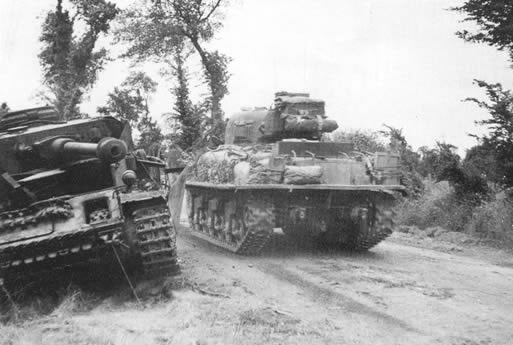
[Which of these two vehicles do you think Cooper might have seen after that battle?]
Secondly, the author makes no attempt to distinguish what he saw from what he surmised, from what he heard through the grapevine. He presents as fact things which simply were not true, demonstrably so in many cases. No attempt was made to provide a source or reference to some of the claims he makes. It is up to the reader to make his or her personal determination as to the accuracy of anything in the book.
It is likely that the things he personally saw are somewhat close to fact. But statements about machinations seven pay grades higher than him and several hundred miles away are a little more suspect.
Cooper's book is probably the most egregious example of citing a memoir and making more of it than one should, so I merely use it as a learning point. Less controversial memoirs, such as Carius' Tigers in the Mud or Loza's Commanding the Red Army's Sherman Tanks should be viewed just as much from the same lens, but in fairness to them, they suffer from far less overreach and can be taken far more at face value.
I'll get off the soapbox now. Here's Bob to take you to the forum thread. Otherwise, track me down on Facebook and sometimes I even stream on Twitch.
 |
 |
 |
